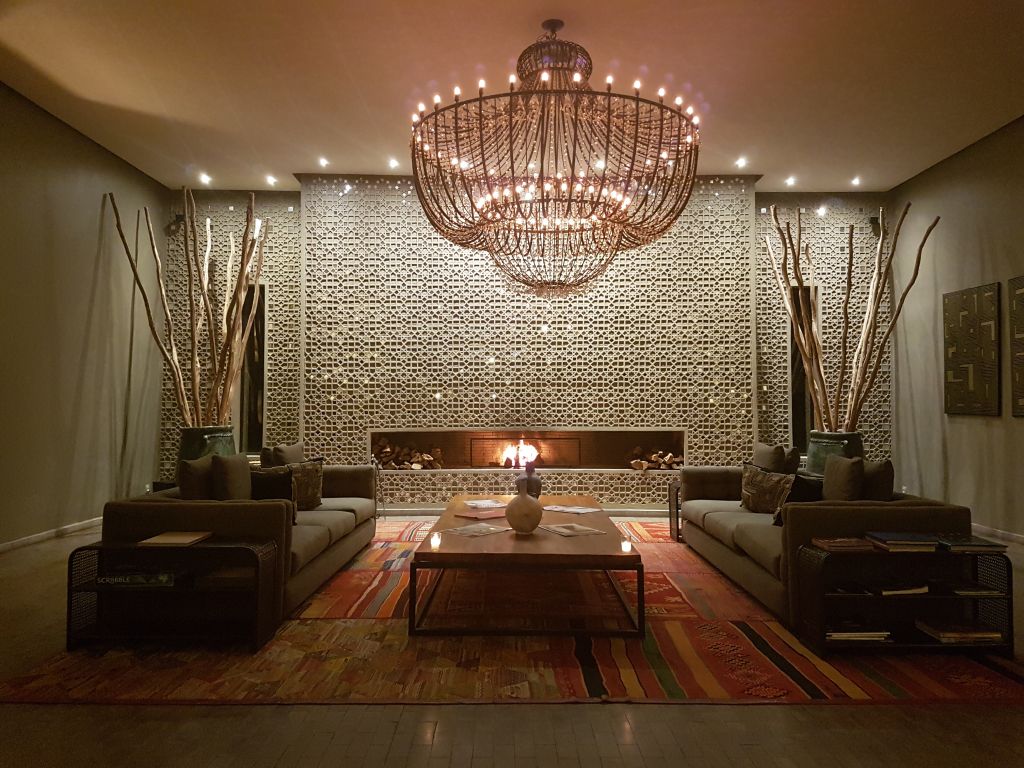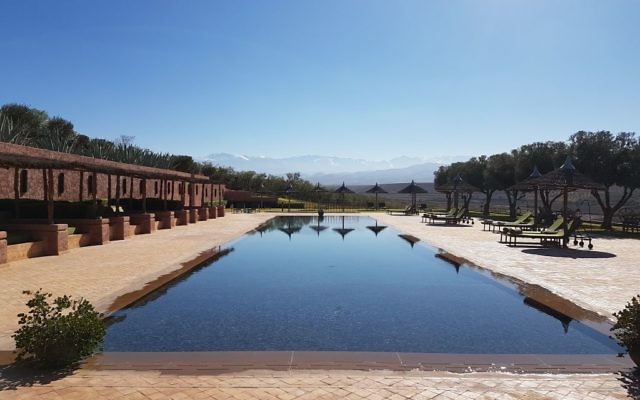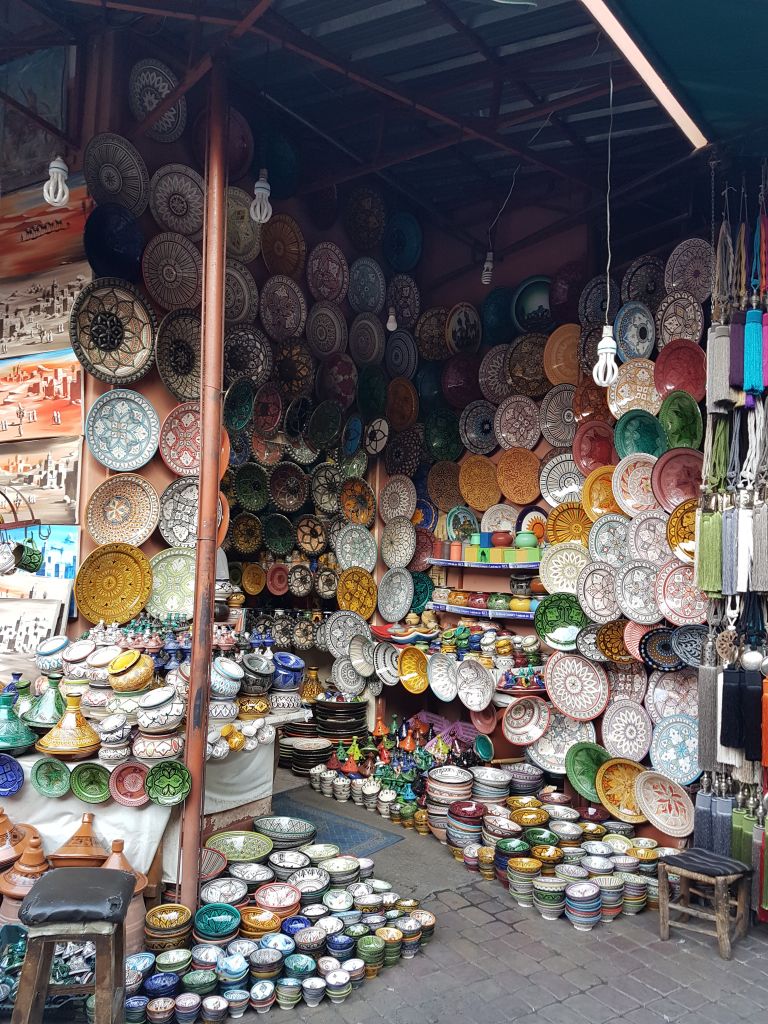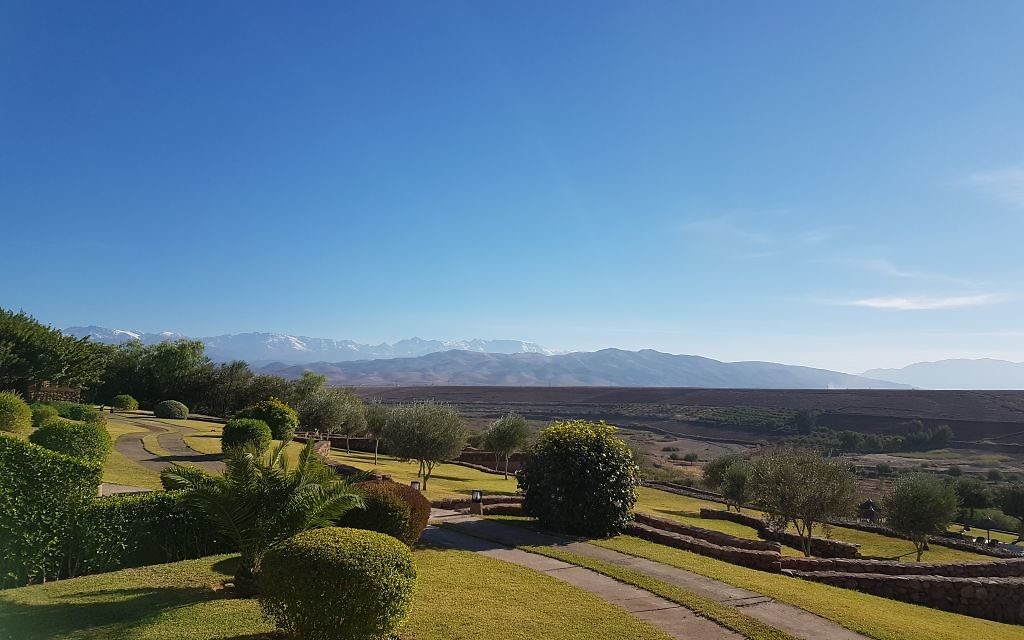Far from Marrakech’s medina crowds
Mountains, tagines, massage and Yves Saint Laurent. Alex Galbinski discovers all that Marrakech has to offer, while wishing she had more bags for shopping
Turning off the main road from Marrakech, driving along a very bumpy track, and up to the outskirts of a Berber village, we were cased by various cats stretched out languorously in the winter sun.
Just a 40-minute drive from the Red City – but a world away from its hustle and bustle – was Le Palais Paysan (‘The Peasant Palace’), a large boutique hotel and our home for the weekend. With the panoramic backdrop of the snow-capped Atlas Mountains against an azure sky, the hotel’s views were breath-taking; it was the perfect seasonal getaway.
After being shown our quarters – one of 16 deluxe and beautifully-designed rooms, decorated in muted tones inspired by nature and punctuated by splashes of colour – my friend and I were welcomed with Moroccan tea and traditional pastries on the open terrace. Your mind can’t help but quieten as the truly magnificent backdrop takes its hold.
Get The Jewish News Daily Edition by email and never miss our top stories Free Sign Up
All of the rooms (with twin or king-size beds) have floor-length patio doors opening onto a private balcony, with views over the valley. We toured the hotel and its seven-hectare grounds, complete with perfectly-manicured green lawns, pink bougainvillea and aloe vera plants that were a strong visual juxtaposition against the arid red of the desert.
Walking through the carefully created paths flanked by olive and lemon trees, we met the animals – horses, donkeys and goats (there is a petting farm) – before being shown the pond, pool and Jacuzzi.

Lunch was filling; lamb, served with beef sausage and couscous, or fish, cooked in a traditional tagine, and profiteroles with ice cream. As the food is cooked fresh on-site, using produce from the hotel’s vegetable garden, the chef is extremely accommodating to food preferences. The staff, most of whom are locals, are attentive without being intrusive.
More active types can arrange to go golfing (there are courses nearby), trekking in the surrounding villages, horse-riding or cycling (the hotel’s bicycles are free to use) and you can even take an Arabic calligraphy class.
We, however, took ourselves off to read by the pool overlooking the mountains (it was too cold to swim), before indulging in a traditional oriental massage; the orange blossom oil further calming the senses (you can also choose an authentic hammam treatment).

With the setting sun, there is a chill, the edge of it perfectly offset by the real log fire in the stunning grey tiled lounge that features a stunning chandelier, helped by a cocktail in hand.
The next morning, heavily fortified after a breakfast of traditional Berber eggs, home-made yoghurt and pancakes, we stopped off at the Yves Saint Laurent Museum in Marrakech, which only opened in October, but has already attracted scores of visitors.

Alongside his clothing collection – which includes ‘Le Smoking’ tuxedos and jumpsuits he famously created for women, as well as his signature colour bloc Mondrian dress – the museum also displays drawings and photographs that document the history of the fashion house. There is also additional space for temporary shows and the current one comprises André Rau’s photographs of YSL’s friend and muse, the actress Catherine Deneuve, a research library, auditorium,
bookshop and café.
Located just next door is the Jardin Majorelle – named after its creator, the French painter Jacques Majorelle, and later acquired by YSL and his former partner Pierre Bergé in 1980. They are busy; every traveller to Marrakech no doubt wanting to see the exotic plants and striking blue and green paintwork for themselves.
After this couture experience, we hit another of Marrakech’s cultural spots: the famous souk, with its winding alleyways and hidden treasures. Having last visited the city in the summer of 2001, the smaller crowds and cooler temperature this time made for a less frenetic experience, and we chuckled as we listened to the patter of the market traders plying their wares.
“It’s better than Asda price! Buy one, get one free!” they cried, cajoling passers-by to their stalls overflowing with spices of every hue, leather goods, rugs and more.
Coming with only hand luggage, I was forced to be restrained, so only bought a traditional Moroccan bowl, but did consider the leather slippers, hammam towels and general trinkets on offer (including what looked like a ‘yad’ beside a Star of David amulet at one shop). Next time I’ll bring more bags.
Jews have lived in Morocco, and among the Berbers, since the Roman times. Before the establishment of the state of Israel, there were more than 350,000 living in the country, but now, only around 2,500 remain, mostly living in Casablanca.
King Mohammed VI of Morocco has publicly committed to conserving spaces of cultural dialogue and coexistence and, last year, arranged for the Essalam neighbourhood, a historic Jewish area in Marrakech, to be restored to its original name of El Mellah. Indeed, one of his senior consultants, André Azoulay, previously advised his father, King Hassan II.
Philippe Taburiaux and Horst Reddmann, the Belgian proprietors of Le Palais Paysan, also own Talaa 12, a chic and luxurious eight-room riad in the medina, a serene bolthole from the hectic life just outside.
After taking in the hotel’s stunning courtyard with its orange trees and hidden seated areas, we had a tasty lunch of dips (the aubergine and lentil dips were particularly delicious) followed by chicken tagine with preserved lemons served on the roof terrace, where diners can sit on white loungers protected from the sun by a canopy.
Wandering through the Jemaa el-Fnaa, the central market square, it was too early for the snake charmers, but we did watch traders setting up their stalls for the long night ahead before heading back to the calm oasis of Le Palais Paysan.
The next morning, we joined the hotel’s chef, Hafid Aid Chiba, and other guests for an informal cookery demonstration, where he patiently showed us how to make a seabass tagine, cucumber salad, cured fish with lemon, ginger and olive oil, and a salad dressing with avocado, which we then enjoyed for lunch, along with a refreshing local Moroccan rosé.
It was the ideal end to a wonderful weekend. Just a three-hour plane ride from London but a world away, Marrakech makes for the perfect short – or long – break and one that will, I hope, be repeated before too long.
Alex was a guest of Le Palais Paysan, where rooms cost from around £160 per night on a bed and breakfast basis.

Thank you for helping to make Jewish News the leading source of news and opinion for the UK Jewish community. Today we're asking for your invaluable help to continue putting our community first in everything we do.
For as little as £5 a month you can help sustain the vital work we do in celebrating and standing up for Jewish life in Britain.
Jewish News holds our community together and keeps us connected. Like a synagogue, it’s where people turn to feel part of something bigger. It also proudly shows the rest of Britain the vibrancy and rich culture of modern Jewish life.
You can make a quick and easy one-off or monthly contribution of £5, £10, £20 or any other sum you’re comfortable with.
100% of your donation will help us continue celebrating our community, in all its dynamic diversity...
Engaging
Being a community platform means so much more than producing a newspaper and website. One of our proudest roles is media partnering with our invaluable charities to amplify the outstanding work they do to help us all.
Celebrating
There’s no shortage of oys in the world but Jewish News takes every opportunity to celebrate the joys too, through projects like Night of Heroes, 40 Under 40 and other compelling countdowns that make the community kvell with pride.
Pioneering
In the first collaboration between media outlets from different faiths, Jewish News worked with British Muslim TV and Church Times to produce a list of young activists leading the way on interfaith understanding.
Campaigning
Royal Mail issued a stamp honouring Holocaust hero Sir Nicholas Winton after a Jewish News campaign attracted more than 100,000 backers. Jewish Newsalso produces special editions of the paper highlighting pressing issues including mental health and Holocaust remembrance.
Easy access
In an age when news is readily accessible, Jewish News provides high-quality content free online and offline, removing any financial barriers to connecting people.
Voice of our community to wider society
The Jewish News team regularly appears on TV, radio and on the pages of the national press to comment on stories about the Jewish community. Easy access to the paper on the streets of London also means Jewish News provides an invaluable window into the community for the country at large.
We hope you agree all this is worth preserving.
-
By Laurent Vaughan - Senior Associate (Bishop & Sewell Solicitors)
-
By Laurent Vaughan - Senior Associate (Bishop & Sewell Solicitors)
-
By Laurent Vaughan - Senior Associate (Bishop & Sewell Solicitors)
-
By Laurent Vaughan - Senior Associate (Bishop & Sewell Solicitors)






















